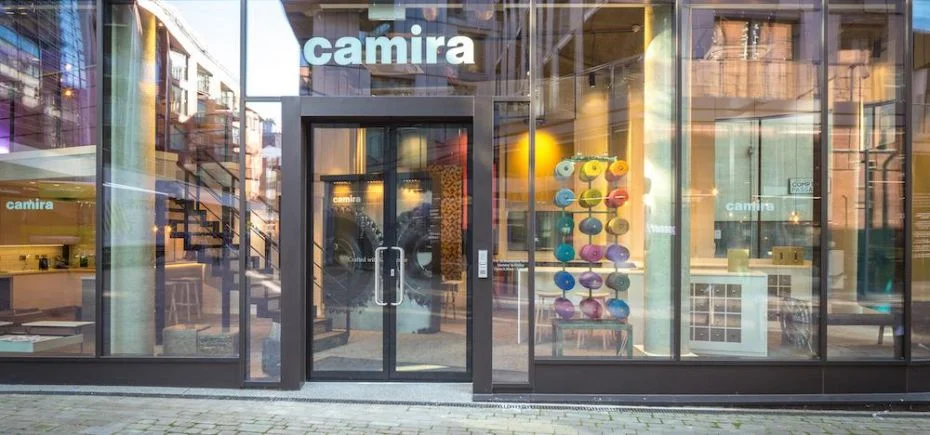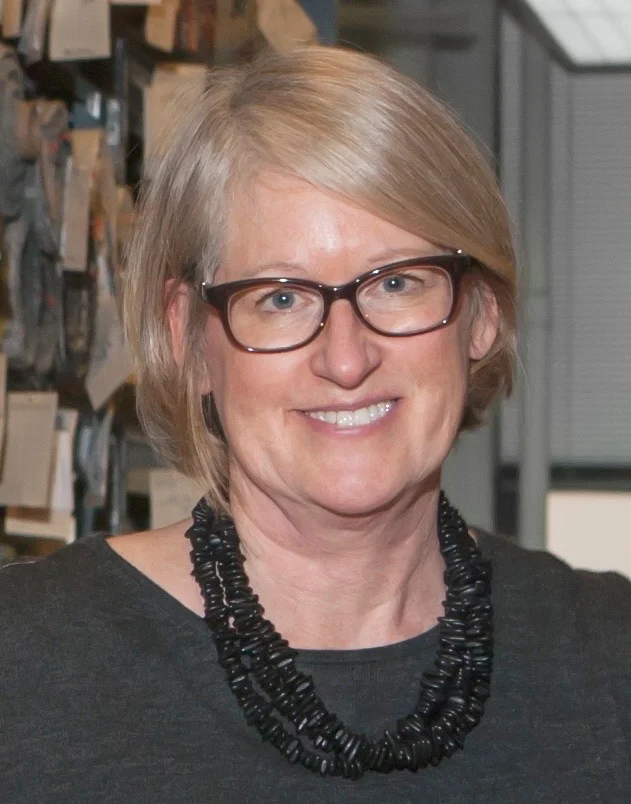The Brentano design studio demonstrates the lines philosophy of beauty + performance with the introduction of three new products - Iliad, Mesa and Graviata. Joining the spring 2017 Ceramic collection, the radiant and resilient textiles present a variety of pattern and design to the residential, hospitality and contract markets.
The History of Leather Tanning
When our ancestors learned how to wrap pieces of animal skin around their feet to protect them from stones and thorns, they were able to walk faster. When they found out that food could be transported in a bag made of animal skin, they could walk farther. And when they learned to cover their bodies with hides, they were protected from the elements. Once they learned to tan the untreated hides to keep them from getting as hard as wood or rotting away, they produced flexible and long-lasting leather for the first time.
Chromatography - Scholten & Baijings on their new sofa, textiles, and exhibition debuting at Salone del Mobile 2017
This year, at Salone del Mobile in Milan, Herman Miller and Maharam present the exhibit “Chromatography: The Colour World of Scholten & Baijings” to launch the new ColourForm Sofa Group and shine a light on our partnership with the pair of Dutch designers. Partners in life and work, Stefan Scholten and Carole Baijings have spent decades perfecting a droll brand of minimalism, where pattern and texture, soft colors, and subtle geometry coalesce into surprising furniture, fabrics, and objects. In addition to ColourForm, the pair will also unveil a trio of new fabrics in multiple colorways. WHY recently sat down with the couple to get their views on comfort, creativity, and why it all starts with color.
MAHARAM’S FUTURE VISION
There are few companies with as storied history as Maharam, which was founded in 1902 by Russian-born American immigrant Louis Maharam. From a pushcart near Manhattan’s Wall Street, Louis sold fabric fabric remnants, a business venture that subsequently evolved to become a storefront in New York City’s midtown.
Kvadrat textile factory revealed in photography by Alastair Philip Wiper
These new images by British photographer Alastair Philip Wiper reveal one of the facilities where leading textile manufacturer Kvadrat produces its highly engineered fabrics. Wiper visited the Wooltex factory in Yorkshire, England, one of several specialist textile mills around Europe that Kvadrat has invested in. His aim was to show the complex process that goes into making its high-end products.
Q+A: How Designers Do Inspiration
Work spaces need to provide inspiration without compromising performance. Inspiring moments within a space can engage the mind, allow for respite from the rigors of the workday or allow people to see a problem from a new perspective.
As president of Designtex for the last five years, Susan Lyons leads a team of innovators who are relied upon to inspire others with an evolving collection of textiles, wallcoverings and other applied materials with reduced environmental impact. Designtex, a Steelcase company, is the leading company in the design and manufacturing of applied materials for the built environment.
Designtex President: Four Materials Trends in 2017
As president of Designtex for the last five years, Susan Lyons leads a team of innovators known for a rigorous and dedicated approach to research and development of textiles, wallcovering and other applied materials with reduced environmental impact. Designtex, a Steelcase company, is the leading company in the design and manufacturing of applied materials for the built environment with an evolving catalog. Via steelcase.com
Wolf-Gordon x Mae Engelgeer: The Collaborative Collection
Wolf-Gordon and Mae Engelgeer have recently combined talents to create a geometric collection of textiles that was previewed at NeoCon 2016. The collection consists of one drapery textile, two digital print wall coverings, and four upholstery textiles, each with a signature look.
Together, they’ve created a collection that partners graphic elements and textures with the craftsmanship of Dutch Modernism, and given a modern spin. As a result, each of the pieces is characterized by clean lines, abstract geometric forms, and luxurious details. While the pieces come in many colors, they still maintain a neutral palette, while staying elevated with metallic accent threads.
Momentum Group Receives Malcolm Baldrige National Quality Award
Irvine, California–based contract textiles manufacturer Momentum Group has received the 2016 Malcolm Baldrige National Quality Award (MBNQA). Momentum was honored for its commitment to sustainable excellence through innovation, improvement, and leadership.
Manchester’s Spatial Office Environments creates new Clerkenwell textiles showroom
North West fit-out firm Spatial Office Environments is on track for a record seven-figure turnover just two years since its launch.
The Manchester-based company pulled in £1.2m in its first 12 months, £1.7m in its second and has now forecast its 2016 revenue to hit £4m.
This week, Spatial has announced the completion of textile firm Camira Fabric’s new 1,300 sq ft showroom in Clerkenwell, London.
Filling the entire ground floor of the Poppy Building in the pedestrianised Brewhouse Yard, Spatial’s fit-out created a user-focused textile resource for fabric specifiers and designers.
PREVIEW / MAHARAM’S NEW LEATHER COLLECTION
The textile geniuses at Maharam will debut their first collection of leather upholstery next month. Focusing on leather that has been minimally treated and processed, the eight styles in the collection are sourced from boutique tanneries in Italy, with the exception of the suede, which will be sourced from Spain. Maharam has developed 100 individual shades using the texture and other material qualities of leather to determine the color direction. In addition, two new accessories will launch with the line, the first of which is a Market Tote designed in collaboration with Various Projects’ Elizabeth Beer and Brian Janusiak. Diecut from leather, the bag transforms from a flat rectangle into a roomy net bag that is available in four colors. A Folded Pouch, designed by Maharam Media (the brand’s in-house design studio) comes in two sizes to store everyday essentials (and non-essentials like iPads). Both feature a stitchless construction in a vacuum-dried leather with a flat, pressed texture that comes in a range of neutral and flourescent colors. Here we share some photos of the leather process in Italy, shot by London-based photographer Nick Ballon.
Hear No Evil, See No Evil: Acoustical Solutions That Are Easy on the Eyes
Open-plan workplaces continue to get a lot of flak for excessive noise and lack of privacy, but often go unchanged because, well, they’re already designed and built. Fortunately, acoustical-product specialists are helping to improve audio privacy and control noise in such spaces without requiring a gut renovation — and their solutions are attractive, to boot. One brand from this market segment that’s caught our eye is Kirei, who offers everything from peel-and-stick modular tiles and ceiling baffles to hanging screens and custom panels for furniture application.
The company’s EchoPanel Tiles come in three different style groups depending on aesthetic and ease-of-installation needs. What we like best from this family is the Geometry collection, a peel-and-stick series comprising hexagons, squares, triangles, rectangles and pentagrams. The tiles can be arranged in any kind of configuration, and since they come in a total of 20 colors, they can even be used to create an artistic mural. Geometry tiles offer an NRC rating of approximately .36 and have a Class C fire rating.
How workspace trends, technology impact real estate decision-making for major Charlotte companies
Panelists at Wednesday’s CoreNet Global Carolinas mega event in uptown Charlotte largely agreed on one theme: evolving workspace trends have become a big deal in commercial real estate.
“We’re creating a workplace environment that allows workers to be at their most productive,” said Calvin Saboorian, managing director of real estate at Duke Energy (NYSE: DUK), speaking at one panel that examined workplace strategies in commercial real estate. “We’re starting at the bottom and going up.”
Brentano Launches Fall 2016 Cityscape Collection
The fall 2016 Cityscape collection captures the urban landscape within a two dimensional textile form. Design Director Iris Wang and the Brentano design studio were inspired by all senses represented within the metropolitan environment – such as the towering skyscrapers, perpetual movement and energetic sounds that pulse throughout any city. The 18 new patterns symbolize society’s kinetic energy while offering a unified balance of residential, hospitality and contract textiles.
Upholstery vs. Panel vs. Acoustic vs. Cubicle
What makes a fabric something that is made for you to sit on instead of something to wrap a panel with? Or hang in a hospitable? Are the fabrics really all that different? The answer is yes and no, as we will explain in this post.
Six Striking Textiles to Enliven Seating
These high-performing upholstery fabrics feature colorful, dynamic prints and the durability required for use in commercial applications indoors and outdoors.
Sina Pearson Textiles is now part of Momentum Group
Irvine, California–based textile supplier Momentum Group has announced it has acquired Sina Pearson Textiles. Sina Pearson, known for her globally influenced textile design, will join Momentum Group as the company’s fourth distinct brand. Designers such as Carl and Emanuela Magnusson, Sheila Hicks, and Hazel Siegel have also contributed to Momentum Group’s collection in recent years.
Content Matters: Polyester
Polyester is the most common and versatile fiber type that we weave fabric with in our mills and most of our upholstery, panel/acoustic and cubicle fabrics are woven out of polyester. In this article we will cover what polyester is, where it comes from, and its advantages and disadvantages.
Polyester is a man-made material that is essentially plastic, however it mimics natural materials like wool, cotton and silk but with increased performance. Polyester is used in lots of different products such as clothing, bedding, blankets and industrial applications. In fact, plastic water bottles also fall in the polyester family and are the main source of recycled polyester. If you understand chemistry, and want a more in-depth look at what polyester is at a molecular level, click over to the Wikipedia article here. I frankly start to get lost pretty quickly when I start to read about chemical structure of thermoplastics and polyethylene terephthalates... And I am guessing most of you do too.
Modern Meadow raises $40 million to grow leather without livestock
A Brooklyn-based startup called Modern Meadow has raised $40 million to become a top source of leather for the world’s makers of fashion and accessories, luggage, sporting goods, upholstery and furniture. Rather than raising animals to slaughter them and take the skin off their backs in a physically and chemically intensive process, Modern Meadow “biofabricates” its leather in labs and foundries.
What are our fabrics made of?
Fabric composition may not be the first thing you consider when selecting a new textile, however, with a wide range of options available you may be interested in finding out more about what a fabric is made of. We break down the options on our online sample ordering service as: wool, synthetic, coated polyester, Trevira CS, vinyl, other (e.g. leather), and environmental (to include bast fibre fabrics and EU Ecolabel certified products). Here we cover some basic facts on wool, polyester, bast fibres and closed loop yarns.

























